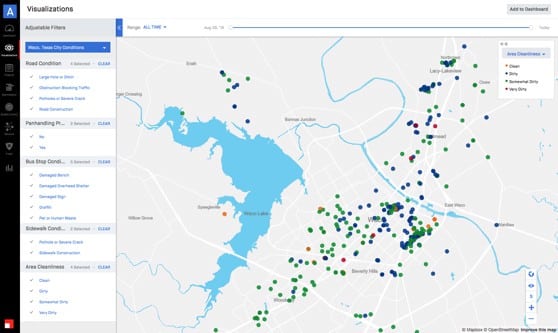Monitor Public and Private Assets with Ease
There is never enough time in the day to get everything done. Almost every organization, public or private, seems to be overwhelmed by the need for more information but is often lacking resources. Numerous organizations are manually monitoring and inspecting public and private assets, which is a time-consuming process that often gets deferred for more time-sensitive needs. But using technology to collect data on the condition of assets can greatly reduce the load on overburdened organizations.
What is an Inspection?
If you are an organization operating in the physical world it can be hard to get the information you need. Often times that need for information requires visiting a physical location, or site inspection, to gather data about its condition. An inspection can be done at a store, a school or a park, anywhere that a human can visit can be inspected.
Why are Inspections Hard
For organizations, there are a lot of challenges when collecting Inspection data is. As an organization, this data is often can be time-consuming to collect, require vast resources you may not have, be of poor quality or expensive to gather.
Imagine if you are trying to get information about the cleanliness of parks in a town or understanding the lighting in the parking lots of your stores that means you have to send an employee to all of these different places. Often time the data is recorded on pen and paper, making it hard for information to be understood in real-time and does not give you a full picture of what is happening on the ground. If only one person is visiting a site the information might not be completely accurate due to a number of reasons.
Use Cases
Inspections can be used to collect a variety of different datasets. Some of the possible use cases include:
- Facility Condition Assessment: Crowdsource the assessment of facilities in terms of age, design, construction methods or materials.
- Asset Condition Assessment: Task Contributors to report on the condition of different assets such as bridges, roads or equipment for preventive maintenance or remedial work.
- Condition Monitoring: Monitor the condition of facilities or assets over an extended period of time, to track services or maintenance.
- Vandalism: Track acts of vandalism, including graffiti or damage, across a selected area so you can better deploy resources and monitor patterns.
- Trash Collection: Use local citizens to understand if trash is being collected, or what locations need to be collected.
- Vector Control: Digitize your vector control needs and rely on a network of Contributors to help fill gaps in your data collection to help mitigate the spread of illness.
Using Data Collection to Mitigate Diseases
Through a USAID Grand Challenge Grant, Premise has been working with local health ministries in three Colombian cities to help mitigate the spread of mosquito-borne diseases. Mosquito related illnesses kill over one million people every year. For local health authorities, monitoring breeding sites can be time-consuming and require vast resources.
Local citizens, through the use of the Premise app, are able to identify and report the locations of mosquito-breding sites. By providing this information local authorities gain access to near-real-time data, which helps them identify hot spots within their communities. With this knowledge, they are better able to deploy resources or create awareness campaigns.
Using Data to Track Public Infrastructure
For many governments, maintaining their infrastructure is a time-consuming and labor-intensive process. When there are reports of problems with an asset the city has to send a team to confirm the problem before they are even able to fix it. The current process requires a lot of inefficient work on the part of the city.
With Premise’s Inspections solution, it is easier than ever for local governments to track the status of public infrastructure. In one U.S. city, our technology was deployed to help the local government understand a variety of different aspects of the city including road conditions, panhandling, bus stop conditions, sidewalk conditions and overall cleanliness. Local residents were able to take photos and report the location of damage government assets or conditions, helping the city better understand the landscape and deploy resources to make repairs.
Conclusion
We know that when it comes to data time is of the essence. Whether you are a business, a government or a non-profit, getting information from locations in the real world can be time-consuming when you do it yourself, but you no longer have to. Crowdsourcing the information you need ensures you get the insights you need when you need them.
Do not rely on slow or inaccurate sources of trickle-down information. Our unique solution allows you to collect ground-level data, ensuring that you can make decisions and create strategies based on verified information.
